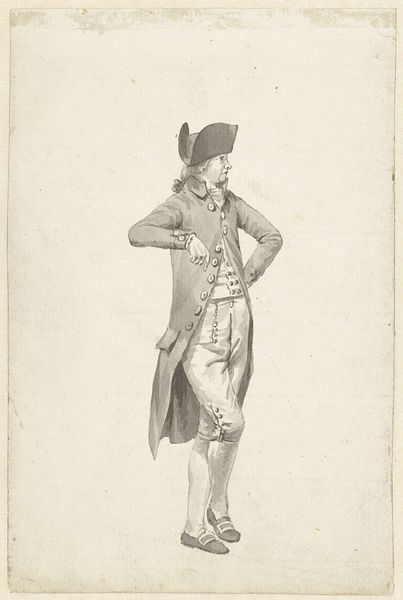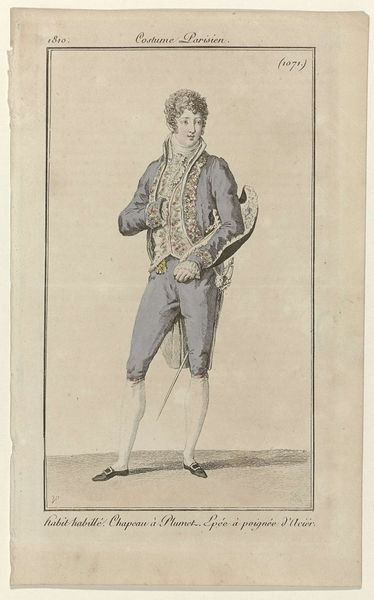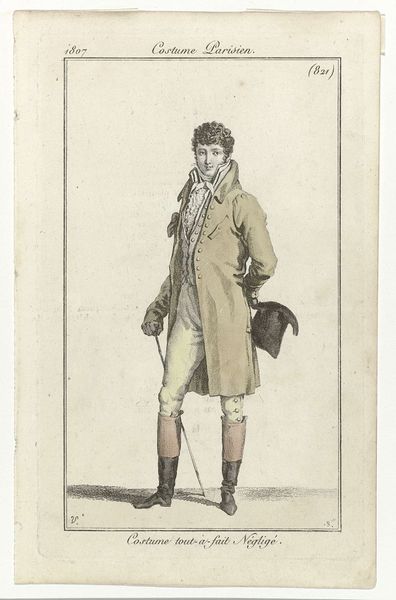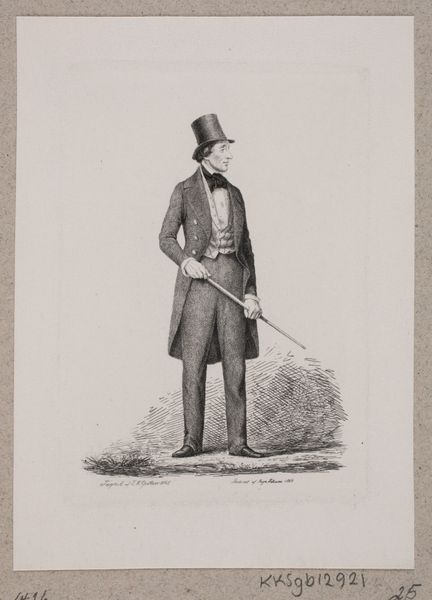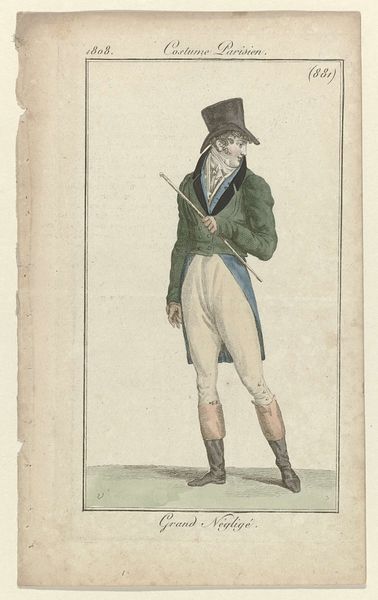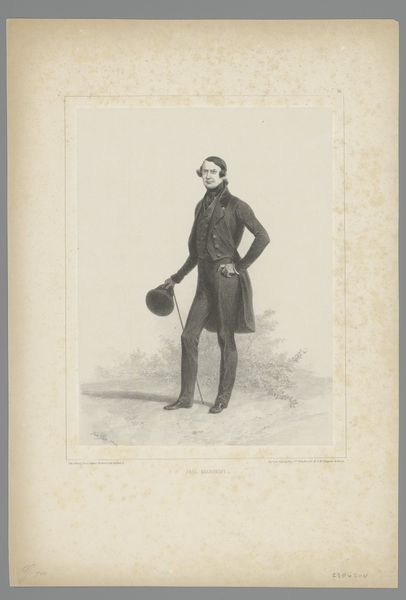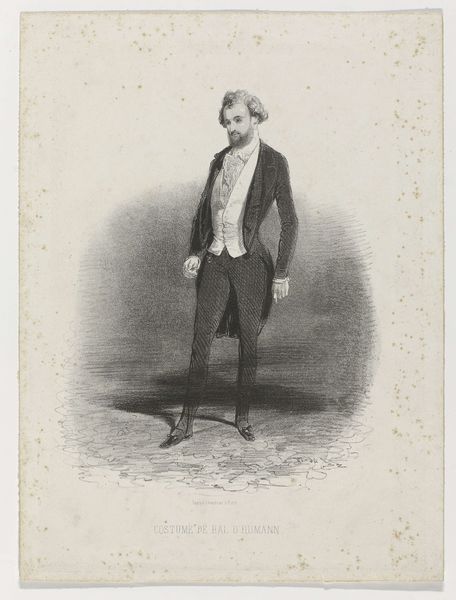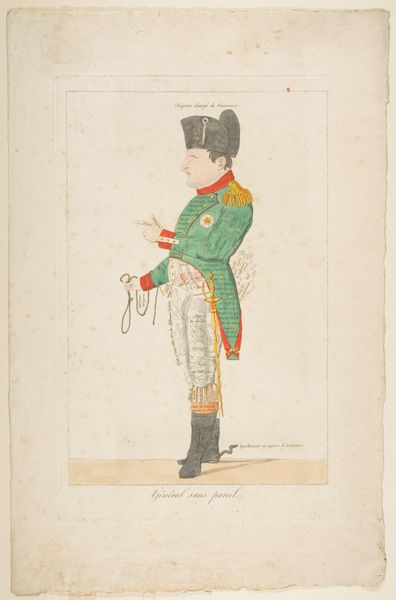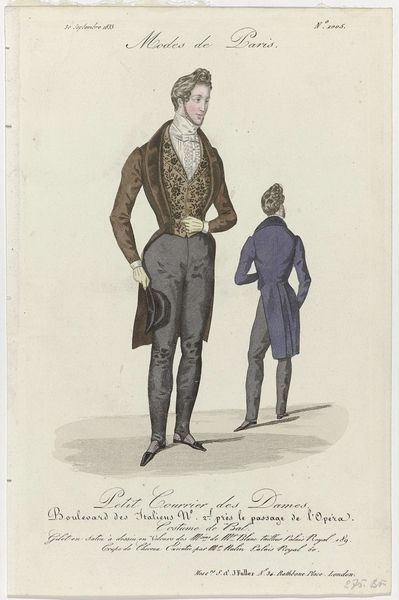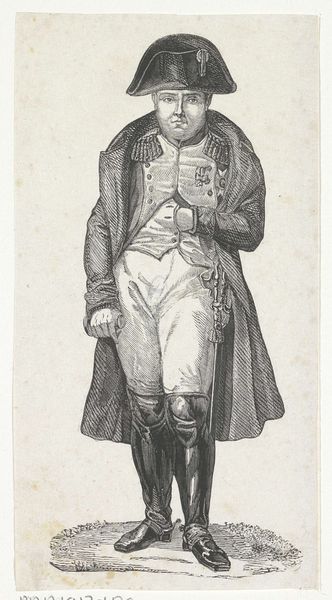
drawing, graphite
#
portrait
#
drawing
#
figuration
#
graphite
#
academic-art
#
realism
Dimensions: height 292 mm, width 197 mm
Copyright: Rijks Museum: Open Domain
Editor: This graphite drawing, “Parijzenaar in achttiende-eeuwse kleding” by Paul Gavarni, was made in 1857 and is now held at the Rijksmuseum. The precision of the lines creates an interesting effect; it feels very controlled, but also a bit detached. How do you interpret this work, considering its historical context? Curator: The fact that Gavarni, in the mid-19th century, chooses to depict a Parisian man in 18th-century clothing raises several questions about representation and social commentary. What does it mean to look back at a specific era? Is it mere nostalgia, or is Gavarni engaging with the politics and identity associated with that period? Consider the French Revolution and its aftermath, and how fashion became a signifier of class and allegiance. Editor: That’s interesting. So the clothing is more than just clothing; it’s making an argument, or perhaps commenting on social roles. Curator: Precisely! Gavarni, working in a time of rapid social change, was keen to observe and depict societal types, often with satirical undertones. Is the choice of clothing a critique of the restored monarchy, or perhaps a commentary on the bourgeoisie’s appropriation of aristocratic aesthetics? Editor: It’s almost like he's using the past to talk about the present. I guess the idea of fashion as a form of political speech isn't new! Curator: Indeed. The act of portraying someone in historical attire invites us to think about how identities are constructed and performed across time, and it encourages a critical assessment of power structures, then and now. What do you think of how Gavarni uses realism? Does he lean towards idealization, or is he challenging that concept too? Editor: I hadn’t thought about it that way. The way he contrasts realism and the historic style... I see it now. It brings another layer to the social commentary, emphasizing the gap between historical appearance and current realities. Thank you! Curator: It's a powerful reminder that art can operate as both a mirror and a lens, reflecting our past while also sharpening our vision for the present and the possibility for societal progress.
Comments
No comments
Be the first to comment and join the conversation on the ultimate creative platform.

